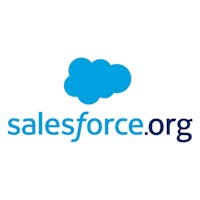If you want to know what makes Susana Rivera-Mills tick, cast an eye around her office at Oregon State University. Tacked on the wall facing the vice provost for academic programs and learning innovation is a quote from education theorist Vincent Tinto: "In admitting a student, a college enters into a contract—indeed, takes on a moral obligation—to establish those conditions on campus, especially in the classroom, that enhance the likelihood that students who are willing to expend the effort will succeed.”
"Every time I see that quote, it reminds me of the importance of our work," says Rivera-Mills. "Our first goal at OSU is to provide a transformational experience for all students, and that means retaining them and graduating them."
"There are three components to proactive advising: the technology, the data, and the human relationship," says Rivera-Mills. "We won't retain students and graduate them because of the tools and the data, but because we build meaningful relationships with them. That's what students remember after they graduate and what they value while they're here."
EdSurge sat down recently to talk with Rivera-Mills about how OSU helps students succeed, and how data and technology are revolutionizing its student-advising program.
EdSurge: OSU is a very large university. How do you build meaningful relationships with so many students?
Susana Rivera-Mills: When you're dealing with 30,000 students, it's very difficult to be personalized with everybody, so we look at cohorts of students instead. We try to figure out similarities so we know where to focus: Transfer students are different from incoming first-year students, for example, just as students who are the first in their families to go to college have different needs from other students.
None of this analysis is possible if you don't have data. In the beginning, it was very difficult for our advisers to access the data that would guide the type of student outreach that was needed. It was difficult for them to differentiate among student populations or student needs. How do you know that one student needs help?
It sounds as if you now look at a lot of data points besides academic performance?
We know that the student experience isn't just academic. It happens in our residences. It happens in our dining halls. It happens in the recreation centers where students work out. We want to take a holistic approach. We also want to look at student engagement. We have data that clearly indicate that students are at a higher risk of dropping out if they don't engage from the moment they arrive on campus. If they don't feel as if they're part of a community, it's a red flag.
Is there any risk that advising will become over-reliant on data?
Actually, we have been very intentional over the last five years in trying to decrease the number of students that each adviser handles. We really value relationship building and there's no way you can build a relationship with a large student load.
I think the biggest mistake we can make is to assume that the data are telling us everything we need to know about the student. They don't. The data are just one input into understanding the student experience. I don't think you can understand a student's experience unless you have built a relationship that allows you to have a conversation.
What is the students' role in all of this?
It's key that students feel as if they are agents in the creation of their own educational goals, and we need more student-facing tools to achieve that. We're still at a point where many of the tools are produced for faculty, advisers, and administrators. Instead, we need tools that empower students to own their educational journeys.
How do you see the job of adviser evolving in the coming years?
It's going to become more and more professional. Advisers will have to be experts in the use of the tools and in understanding the data. They are also going to become increasingly specialized: One adviser might be a retention specialist, for example, or someone who works with at-risk student populations.
This means there will be a need for ongoing professional development. The type of training will need to evolve, too—we're going to see more cross-training. There needs to be a better connection between advisers and the offices of admissions, financial aid, scholarships, and the university foundation. These worlds have been quite separate until now. Today, advisers are really standing front and center, because they're usually the first point of contact for students when they arrive on campus.
What advice would you share with colleges that want to ramp up their own advising programs?
Pay attention to your foundational support. We were so eager to launch initiatives that we didn't do some of the foundational work needed to support them fully. We had a lot of data accumulated over the years, but the data were not organized into reports that were useful or informative. Second, we didn't fully understand what the advisers needed in terms of technology. No one had bothered to do a needs-assessment about what would make their jobs easier and better. This has to be done at the very beginning, particularly on a decentralized campus—I cannot emphasize that enough.
Watch the EdSurge on-demand webinar, “How Analytics Can Support Student Success in Higher Ed,” sponsored by Salesforce.org.
When you finally sat down with the advisers, what did you learn?
One of the biggest problems is that advisers have too many tools. The tools open in different screens or they don't speak to each other. It's really difficult for them to provide guidance to students if everything's not in one place. We are now piloting the Salesforce Advisor Link and one of the early benefits we're seeing is integration. We hope it will help us integrate all of our tools.
Is there one innovation in student advising at OSU that really stands out?
We have a new initiative that pairs financial interventions—retention grants, emergency grants, and completion grants—with proactive advising. If students are in financial trouble and at risk of dropping out, we don't just write them a check. We reach out to assess their experience and find out what help they might need. We've been doing this for three years—with 100 students in each annual cohort—and we've seen a 95 percent retention rate. These are not huge grants—$1,000—but they make a difference. More than anything, we're sending a message to students that we care about them and we are going to do whatever it takes to help them meet their educational goals. To me, that's the most powerful message we can send a student.
What Susana Rivera-Mills Is Reading
These three books are a source of inspiration for Rivera-Mills when she is promoting innovation, managing change, and trying to enhance the undergraduate experience:
Immunity to Change, by Robert Kegan and Lisa Laskow Lahey. "It helps me understand why change can be so difficult for people, why we face resistance even when the change is positive, and how we can help others navigate change."
Diffusion of Innovations, by Everett M. Rogers. "This book helps me frame how we think of innovation in different contexts, how we can scale innovations, and the ingredients that are key to creating a culture of innovation."
The Undergraduate Experience, by Felten, Gardner, Schroeder, et al. "This guide helps me look at the student experience in a holistic way and determine how to align our efforts for maximum impact."



